Normal Color Words Worksheets for Ages 5-9
8 filtered results
-
From - To
Discover engaging Color Words Worksheets designed for ages 5-9 at Kids Academy. These interactive worksheets are perfect for young learners, including ESL students, to master color recognition and vocabulary. Fun activities and vibrant illustrations make learning enjoyable while enhancing reading and writing skills. Ideal for home or classroom use, our worksheets support early literacy development, cognitive growth, and essential understanding of colors. Boost your child's confidence and knowledge with our expertly crafted resources. Explore our collection today to provide a solid foundation in English language learning through colors!
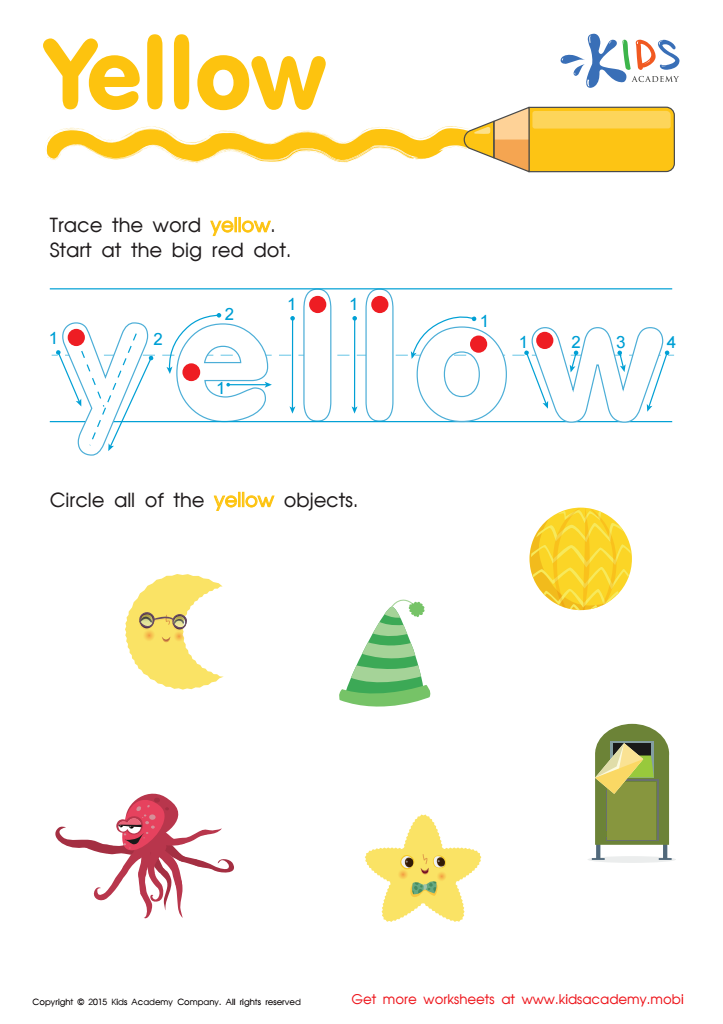

Yellow Tracing Color Words Worksheet


Pink Tracing Color Words Worksheet


Red Tracing Color Words Printable
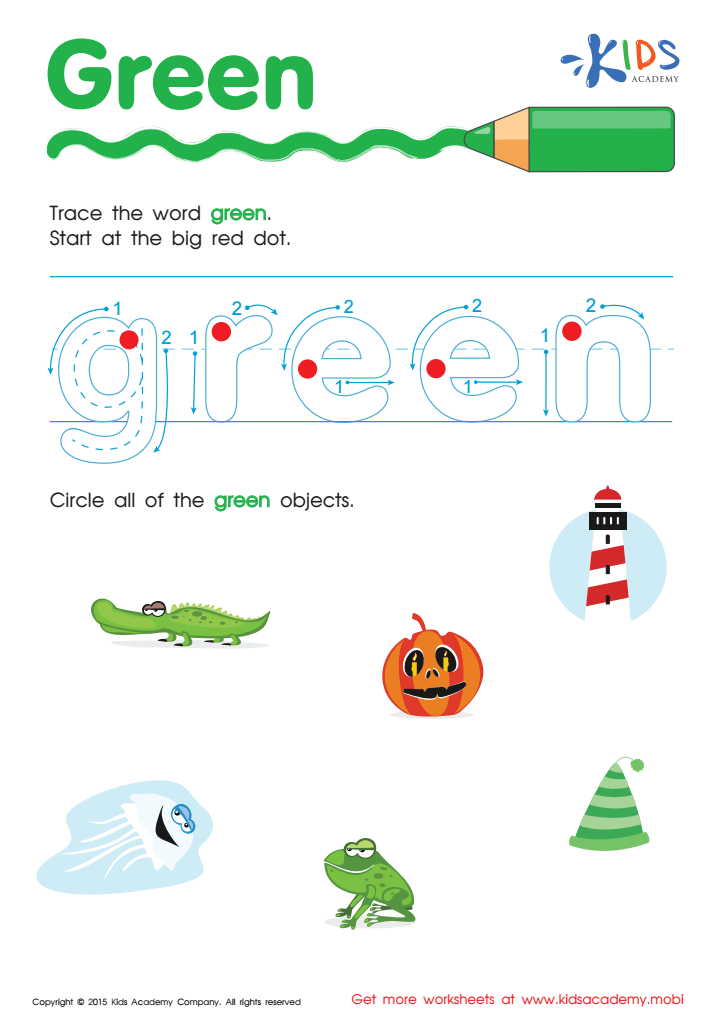

Green Tracing Color Words Worksheet
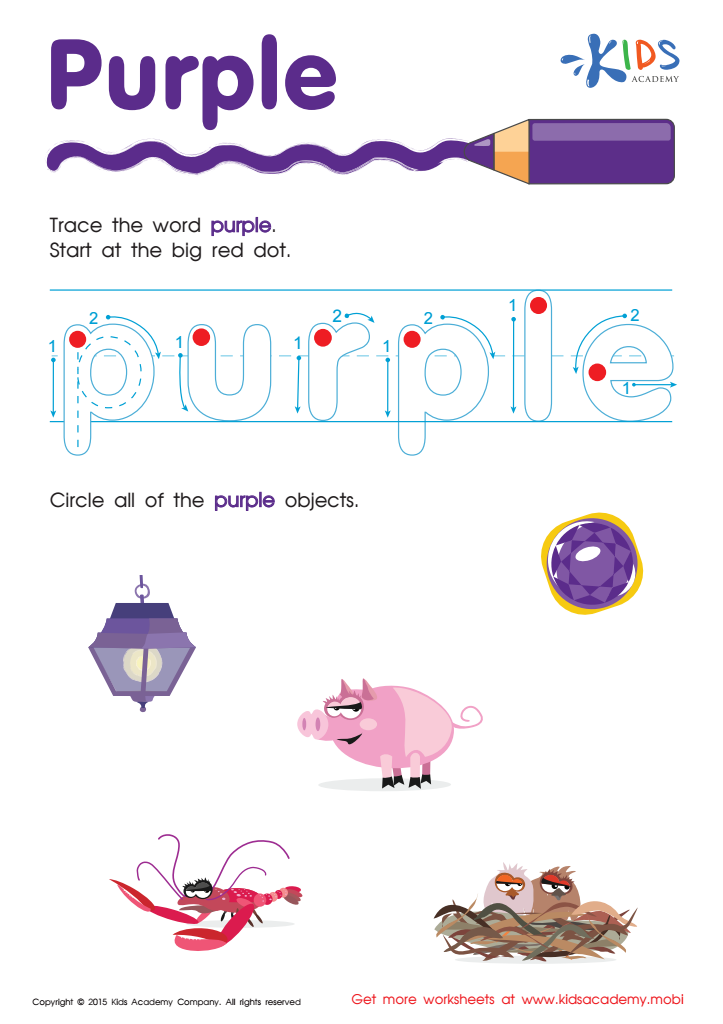

Purple Tracing Color Words Worksheet
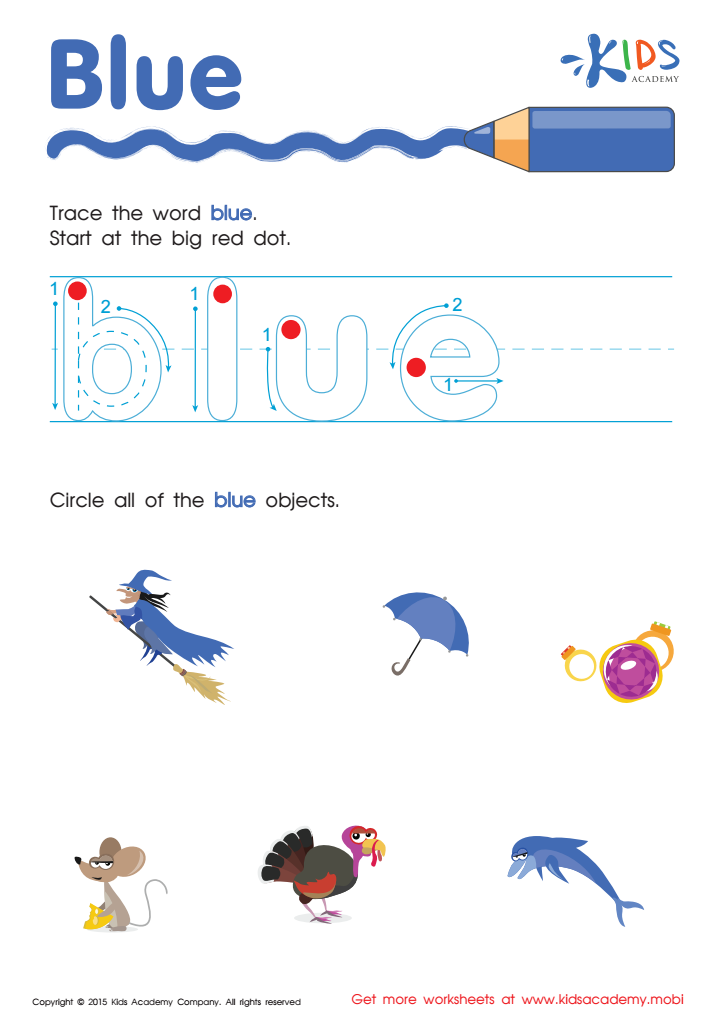

Blue Tracing Color Words Printable
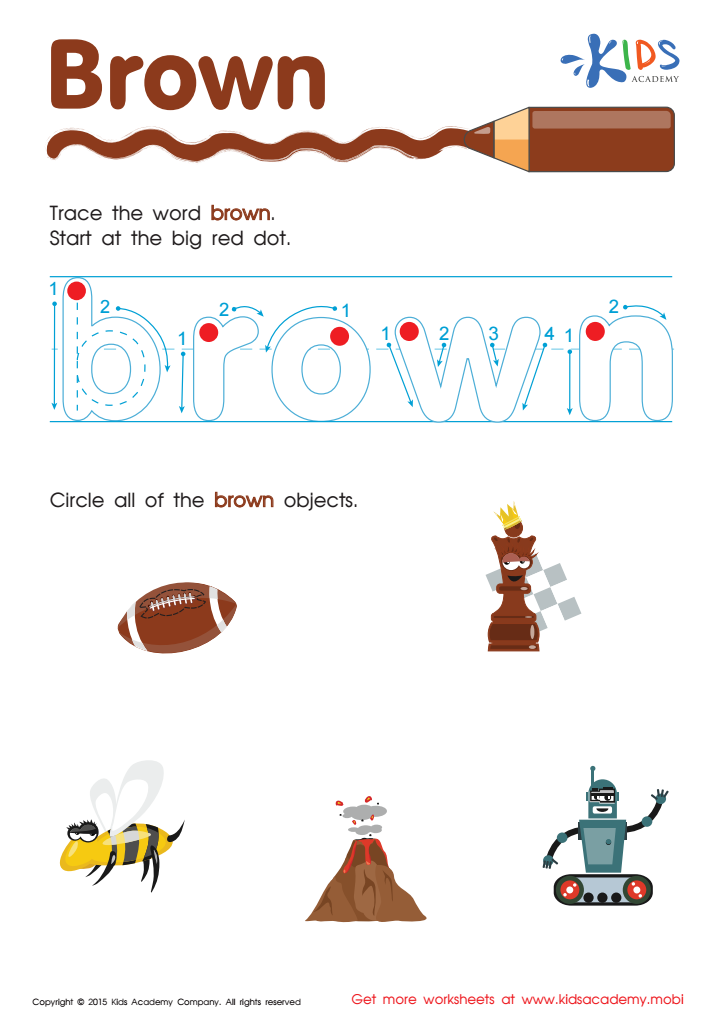

Brown Tracing Color Words Worksheet
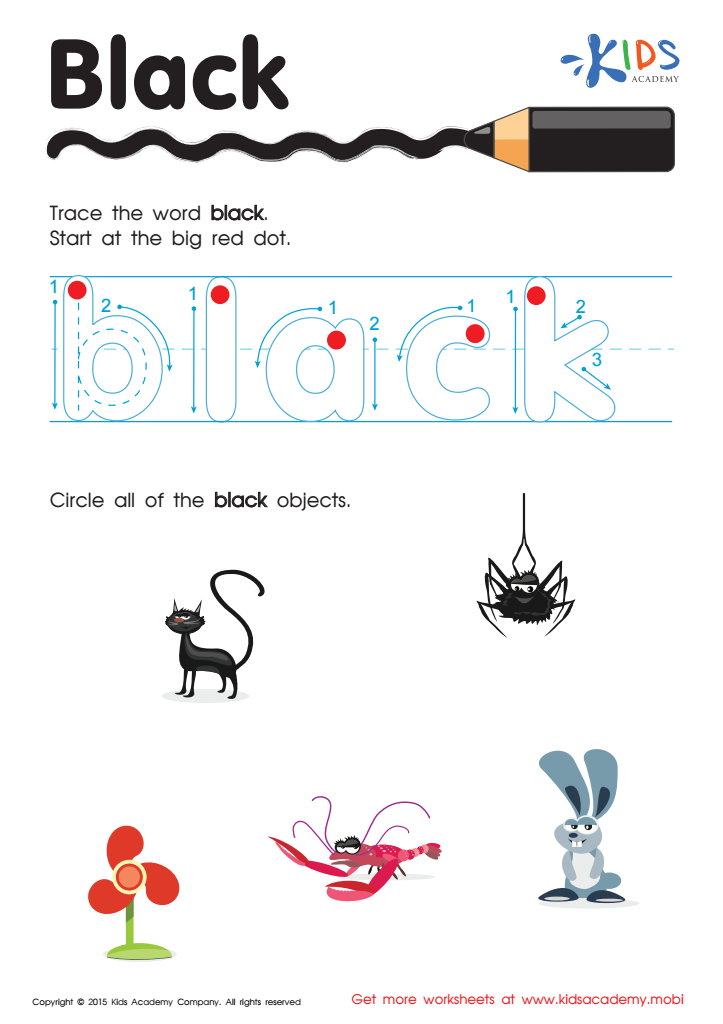

Black Tracing Color Words Printable
Parents and teachers should prioritize normal color words in early childhood education, particularly ages 5-9, as it underpins several key developmental areas. At this stage, children are rapidly expanding their vocabulary and cognitive skills. Recognizing and naming colors improves their language abilities, laying a foundation for future learning in subjects like reading and science.
Color recognition is more than just identifying shades; it concretizes abstract thinking. When children differentiate and name colors, they develop critical sensory and cognitive skills, improving both focus and memory retention. Mastery of color words also enhances descriptive abilities, essential for effective communication and storytelling, and bolsters social skills through shared experiences.
Additionally, using color words supports understanding of other fundamental concepts like sorting, categorizing, and pattern recognition, which are foundational for mathematical reasoning. For example, sorting objects by color encourages systematic thinking and concentration.
Engagement with color terms can also connect lessons to real-world contexts. Children observe and describe their daily environment more accurately, fostering curiosity and observation. Preparing children with a robust color vocabulary thus enriches their overall learning experience, promoting success across varied academic subjects and real-life interactions. Ensuring children have a strong grasp of color words sets the stage for more complex learning and helps them navigate a colorful world.
 Assign to My Students
Assign to My Students















